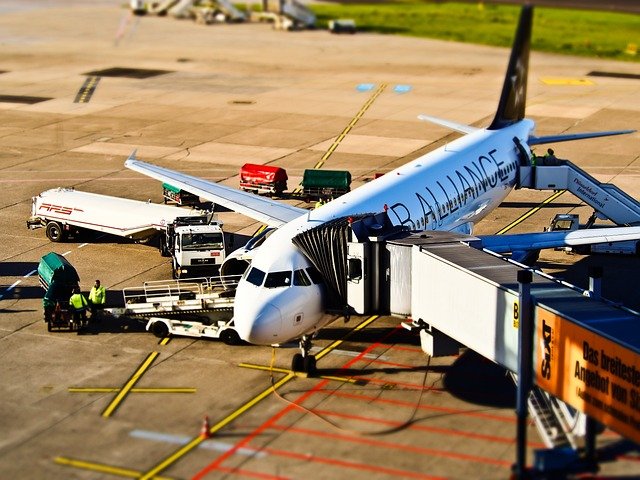Flight Attendant Careers: Roles, Training, Private Jets
Explore how a career as a flight attendant blends customer service, safety responsibility, and travel. This guide explains daily duties, common entry routes, required training, and what distinguishes private jet cabin crew from airline positions. Learn how to start and grow in aviation with practical tips and industry-focused advice on training, qualifications, and career advancement opportunities.

Flight Attendant Careers: Roles, Training, Private Jets
What a flight attendant does
Flight attendants balance passenger care, safety oversight, and cabin readiness on every flight. Typical tasks include conducting safety demonstrations, enforcing safety regulations, and responding to medical or security incidents. They provide customer service in compact spaces, manage cabin preparation before departure, and complete required paperwork. Good communication, quick decision-making, and composure under pressure are essential attributes. Flight attendants also coordinate with pilots, ground staff, and sometimes handle onboard sales, catering logistics, or special passenger requests depending on the operator.
Daily duties and required skills
A typical shift may involve preflight briefings, checking safety equipment and cabin supplies, and welcoming passengers. During flight, attendants monitor cabin safety, serve food and beverages, and assist passengers with seating or comfort needs. When incidents occur, they take lead in evacuations, first aid, or coordinating with crew to de-escalate situations. Important skills include strong customer-service instincts, situational awareness, teamwork, and the ability to follow regulatory procedures precisely. Language skills, cultural sensitivity, and a calm temperament are often decisive in hiring.
How to begin a career in aviation
Getting started usually means meeting basic hiring requirements—age minimums, a high school diploma or equivalent, and fluency in the employer’s working language(s). Airlines commonly look for candidates with prior customer-service experience, flexible availability for irregular schedules, and a professional demeanor. Job seekers benefit from preparing a clear résumé, practicing interview responses, and networking at aviation career events or online industry groups. For private jet positions, employers often prioritize discretion, polished service experience, and the ability to work with VIP clients. Keep in mind this overview highlights typical pathways rather than active openings.
Training and certification
Training differs across employers but typically covers emergency procedures, evacuation protocols, basic firefighting, and first aid/CPR. Airlines provide company-specific courses that explain aircraft layouts, safety regulations, and service standards; these programs usually run for several weeks and include assessments. When required, training culminates in certification issued by the relevant aviation authority. Recurrent training and proficiency checks are also common to keep crews current on safety updates. Prospective attendants can look into flight attendant schools, airline-sponsored programs, or vocational courses to prepare for entry-level roles.
Private jet vs. commercial airline roles
Private jet flying brings different expectations and a different rhythm. Cabin crews on business jets serve smaller groups and deliver highly personalized, luxury-oriented service—menu customization, fine dining presentation, bespoke amenity setup, and strict confidentiality are often part of the job. Scheduling can be mission-based and unpredictable, compared with fixed routes and timetables on airlines. Private crews may also handle additional duties such as coordinating with fixed-base operators (FBOs), light ground handling, or organizing bespoke ground services. Applicants for private roles should emphasize experience with upscale service, discretion, and flexibility.
Career progression and alternatives
Aviation careers offer both vertical and lateral growth. Progression can look like moving up to senior cabin crew roles, purser or lead attendant positions, and into management tracks. Lateral moves include becoming a trainer, recruiter, or transitioning into corporate aviation and charter operations. Developing specialties—medical response certification, additional languages, or crew resource management expertise—can improve promotion prospects. Gaining flight hours across different aircraft types strengthens mobility between regional carriers, major airlines, and private operators. Networking within professional associations and maintaining current certifications are practical steps for long-term advancement.
Practical advice for applicants
- Highlight customer-service achievements and any hospitality or luxury service experience.
- Keep certifications up to date and document recurrent training clearly on your résumé.
- Prepare for behavioral and scenario-based interview questions that test judgment and safety awareness.
- Be ready for physical and schedule demands, including irregular hours and time away from home.
- Respect confidentiality expectations, especially when applying to private-jet operators.
| Provider Name | Services Offered | Key Features/Benefits |
|---|---|---|
| NetJets | Fractional private jet ownership and charter | Large private fleet, standardized crew training, worldwide network |
| Flexjet | Fractional ownership and leasing | Customizable service models, varied cabin layouts, dedicated crews |
| Delta Air Lines | Scheduled commercial airline services | Comprehensive training programs, clear career ladders, international routes |
| American Airlines | Scheduled commercial airline services | Extensive corporate training, seniority-based progression, diverse fleet |
| Gama Aviation | Business aviation and charter services | Corporate jet management, FBO coordination, tailored charter solutions |
| JetBlue | Scheduled commercial airline services | Customer-focused culture, specialized routes, development programs |
Cost disclaimer: Prices, fees, and service offerings vary by provider and region. Contact each company directly for up-to-date pricing and terms.
Final notes
This guide offers a practical overview of flight attendant duties, common entry routes, and distinctions between airline and private-jet roles. It is intended as general information about career paths and training options rather than as current job listings or guaranteed employment advice. Prospective candidates should verify hiring criteria, openings, and training requirements with employers or official recruiting channels before taking action.






